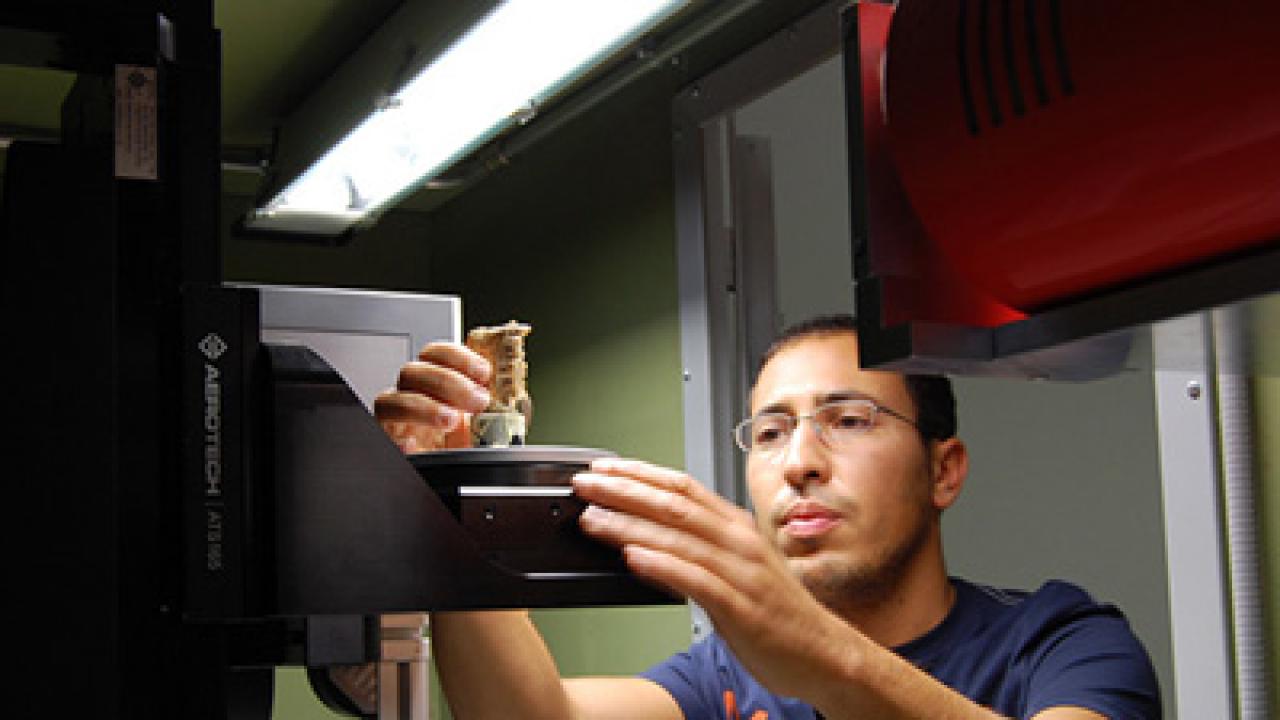
Results of an international research effort led by ICTP and
Sincrotrone Trieste ELETTRA on a nearly 7,000-year-old cracked
tooth from Slovenia suggests that therapeutic dentistry may have
been around much longer than we thought.
Using a combination of modern physics tools--including
three-dimensional, high-resolution X-ray, radiocarbon dating with
accelerator mass spectrometry, and infrared spectroscopy--the
researchers analysed the tooth to determine the age and composition
of a resinous filling detected inside the tooth. The analysis
showed that the tooth was filled with beeswax, likely to alleviate
the pain of chewing on a cracked tooth, providing the earliest
known direct evidence of a therapeutic dental filling.
Details of the research have been published in the online, open
science journal PloS One.
"Bee products were used by prehistoric communities for
technological, artistic and medical purposes, but it is thanks to
the Lonche finding that we can now imagine men doing dentistry in
Neolithic Europe," said the study's lead author, Federico
Bernardini, a postdoctoral fellow at ICTP's Multidisciplinary
Laboratory.
"Evidence of the earliest known practice of dentistry was
discovered some years ago in a 9000-year-old graveyard in Pakistan,
but until now there was no evidence of tooth filling," added
Claudio Tuniz, co-author of the study and a coordinator of the
ICTP/ELETTRA X-ray imaging laboratory.
The tooth is from a jawbone that was found in a cave near the
village of Lonche, Slovenia and is considered one of the most
ancient evidence of pre-historic dentistry and the earliest known
direct example of therapeutic-palliative dental filling so far. The
researchers determined that the jawbone came from a man aged
between 24 and 30 years who lived some 6,500 years ago.
ICTP and Sincrotrone Trieste used funding from a €600,000 grant
provided by the local government of Regione Friuli Venezia Giulia
to develop a new portfolio of instruments and methodologies to
study objects from the past. The two institutes have developed
compact and portable x-ray devices capable of analysing the
structure and chemical composition of ancient bones, buildings, and
art objects in a non-destructive fashion. The devices are the first
instruments of their type in Italy devoted to anthropological
research.
The research on the beeswax filling was carried out in
collaboration with the University "La Sapienza", Italy; Museum of
Natural History, Trieste; INNOVA and 2nd University of Naples; and
the Australian Nuclear Science and Technology Organisation; and the
University of Trieste.
















